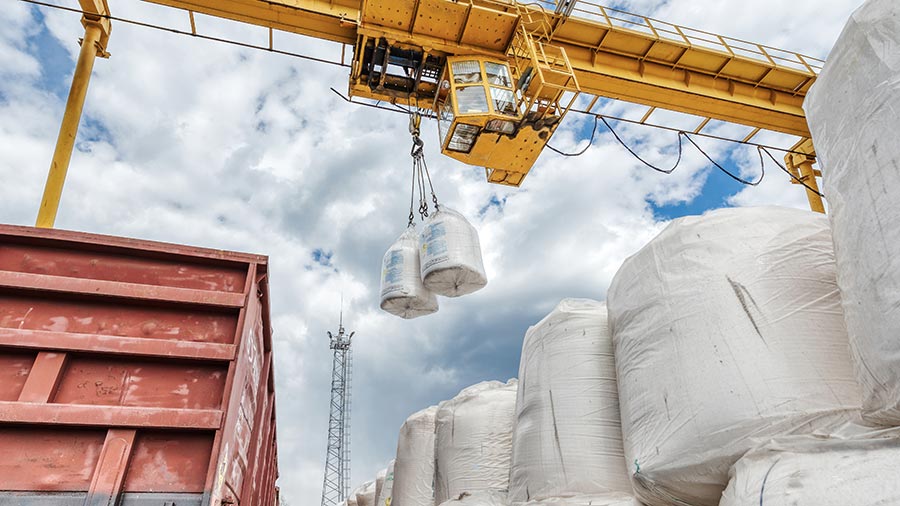Fertiliser price sky-high as Ukraine war worsens energy fears
 © AdobeStock/nordroden
© AdobeStock/nordroden Sky-high prices put quotes for ammonium nitrate (AN) at anywhere between £850 and £1,000/t this week, alongside concern about the security of fertiliser supplies already contracted and manufacturers’ ability to continue production.
European gas prices hit a new high at the start of this week, reaching more than double the level which stopped production at CF’s Billingham plant last autumn.
Yara temporarily cut production at nitrogen plants in Italy and France this week as a result of gas prices.
The two plants have a combined annual capacity of 1m tonnes of ammonia and 900,000t of urea, and the move takes the company’s ammonia and urea production to about 45% of capacity, when taken with the measures already in place at other plants.
See also: Tax and money management tips for diversified farm businesses
Manufacturers in other countries – including Turkey, which exports calcium ammonium nitrate to the UK – have also stopped production.
A CF Fertilisers statement to Farmers Weekly said: “There has been no change to CF Industries’ operational status in the UK. The Billingham complex is online and producing ammonia, nitric acid, ammonium nitrate and carbon dioxide.
“We continue to monitor energy market conditions and to have conversations with customers about the current commercial environment.”
Merchants were expecting new terms from CF midweek, but were not convinced these would materialise.
Pricing and supply are all over the place, in a market that changes by the minute. Imported AN was reputedly available at £850-£870/t midweek, while urea was offered in the high £800s/t, although offers were few and far between on both.
Belarus and Russia account for almost 40% of global potash production, with both now subject to sanctions.
Russian vessels have been banned from UK ports and while Russian product can come into the UK under other flags, many consumers are self-sanctioning and refusing Russian goods, according to Julia Meehan, of commodity analyst ICIS.
Challenging logistics
She added that logistics are proving challenging, with ship owners refusing to call at Russian ports for fear of being further sanctioned. Insurance costs and payment difficulties are further complicating trade.
Port authorities have called for government help to identify blacklisted vessels.
Russia accounts for about 20% of the UK urea market and in 2021 was the country’s third-largest supplier. The UK also imports phosphates and AN from Russia, but in far smaller quantities.
Ammonia hit a new record high which was well above the previous price crisis of 2008.
“It’s terrible all round and very serious,” said Ms Meehan. “Brazil is a major importer and Nigeria a major producer.
“In Brazil, there are no urea offers as sellers are unsure how to price product, while buyers are concerned about supply and affordability issues in the future. Prices have jumped as much as 70% in some regions over the past few weeks.
“Plant shutdowns are likely on soaring energy costs, including in Nigeria.”
Grain
Farmers Weekly’s own ex-farm price survey this week recorded a spot feed wheat average of £283/t, up £16 on the week, following a rise of about £8/t the previous week.
The regional range of £275/t to £301/t reflects the shortage in the North, with the top end of the range in Northumberland and the Borders, while several regions were unwilling to quote a March price.
Oilseed rape
Anyone with oilseed rape to sell could make well above £700/t midweek. The average at £723/t ex-farm for March was a rise of more than £60/t in a week, with oil prices the main push. However, United Oilseeds said an apparent push by China to secure stocks of all commodities was also a likely factor.
